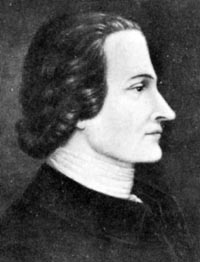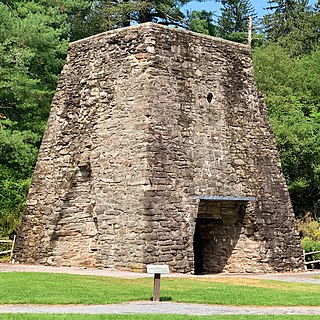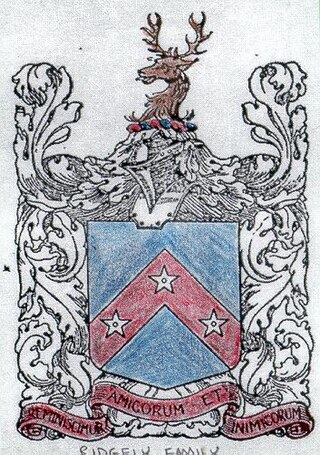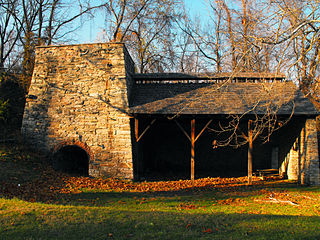Related Research Articles

Elkridge is an unincorporated community and census-designated place (CDP) in Howard County, Maryland, United States. The population was 15,593 at the 2010 census. Founded early in the 18th century, Elkridge is adjacent to two other counties, Anne Arundel and Baltimore.

George Taylor was an American ironmaster and politician who was a Founding Father of the United States and a signer of the United States Declaration of Independence as a representative of Pennsylvania. His former home, the George Taylor House in Catasauqua, Pennsylvania, was named a National Historic Landmark in 1971.

The Patuxent River is a tributary of the Chesapeake Bay in the state of Maryland. There are three main river drainages for central Maryland: the Potomac River to the west passing through Washington, D.C., the Patapsco River to the northeast passing through Baltimore, and the Patuxent River between the two. The 908-square-mile (2,352 km2) Patuxent watershed had a rapidly growing population of 590,769 in 2000. It is the largest and longest river entirely within Maryland, and its watershed is the largest completely within the state.

Saugus Iron Works National Historic Site is a National Historic Site about 10 miles northeast of Downtown Boston in Saugus, Massachusetts. It is the site of the first integrated ironworks in North America, founded by John Winthrop the Younger and in operation between 1646 and approximately 1670. It includes the reconstructed blast furnace, forge, rolling mill, shear, slitter and a quarter-ton trip hammer.

The Iron Act, also called the Importation, etc. Act 1749, was an Act of the Parliament of Great Britain, which was one of the legislative measures introduced within the system of Trade and Navigation Acts. The Act sought to increase the importation of pig and bar iron from its American colonies and to prevent the building of iron-related production facilities within these colonies, particularly in North America where these raw materials were identified. The dual purpose of the Act was to increase manufacturing capacity within Great Britain itself, and to limit potential competition from the colonies possessing the raw materials.

Iron plantations were rural localities emergent in the late-18th century and predominant in the early-19th century that specialized in the production of pig iron and bar iron from crude iron ore.

Pine Grove Furnace State Park is a protected Pennsylvania area that includes Laurel and Fuller Lakes in Cooke Township of Cumberland County. The Park accommodates various outdoor recreation activities, protects the remains of the Pine Grove Iron Works (1764), and was the site of Laurel Forge (1830), Pine Grove Park (1880s), and a brick plant (1892). The Park is 8 miles (13 km) from exit 37 of Interstate 81 on Pennsylvania Route 233.

Col. Charles Ridgely II, "Charles The Merchant" (1702–1772), of "Ridgely's Whim", was a Justice, planter, merchant, ironmaster, and member of the General Assembly of Maryland's lower chamber, House of Delegates and one of Baltimore County's commissioners. Charles II was the son of Charles Ridgely I,, , and Deborah Dorsey, daughter of Hon. John Dorsey.

Montpelier Mansion, sometimes known as the Snowden-Long House, New Birmingham, or simply Montpelier, is a five-part, Georgian style plantation house located south of Laurel in Prince George's County, Maryland. It was most likely constructed between 1781 and 1785. Built by Major Thomas Snowden and his wife Anne, the house is now a National Historic Landmark operated as a house museum. The home and 70 acres (28 ha) remain of what was once a slave plantation of about 9,000 acres (3,600 ha).

Catoctin Furnace is an historic iron forge located on Route 15 between Frederick and Thurmont in Catoctin Furnace, Maryland. Since it was closed in 1903, no forge has been at the site.

Principio Furnace and village is in Cecil County, Maryland, 4 miles (6.4 km) northeast of Havre de Grace.
The Joppa Iron Works, also known as Patterson's Iron Works was founded around 1817 by Joseph and Edward Patterson of Baltimore, the brothers of Elizabeth Patterson Bonaparte, the sister-in-law of Napoleon I of France.
Charles Wood was an English ironmaster and one of the inventors of the potting and stamping method of making wrought iron from pig iron.

The Elkridge Furnace Complex is a historic iron works located on approximately 16 acres (6.5 ha) at Elkridge, Howard County, Maryland.
Whiskey Bottom Road is a historic road north of Laurel, Maryland that traverses Anne Arundel and Howard Counties in an area that was first settled by English colonists in the mid-1600s. The road was named in the 1880s in association with one of its residents delivering whiskey after a prohibition vote. With increased residential development after World War II, it was designated a collector road in the 1960s; a community center and park are among the most recent roadside developments.
Richard Snowden (1688–1763) was the grandson of Richard Snowden Sr (1640–1711), one of Maryland's early colonists, who arrived in 1658. By Articles of Agreement dated July 5, 1705, Snowden and four other partners – Joseph Cowman, Edmund Jenings, John Galloway, and John Prichard – founded the Patuxent Iron Works on the site of Maryland's oldest iron forge. Together they founded one of Maryland's first industries, and settled the land now known as Laurel and Sandy Spring, Maryland.
Cowman is an occupational surname of Norman origin. from cowman. A rare surname throughout the world today, Cowman is most common in Ireland. Notable persons with that surname include:

During the 19th and 20th centuries, several members of the Whitaker family and related families, made important contributions to the American iron and steel industry.

The Neabsco Iron Works was located in Woodbridge, Virginia, US. It was situated on 5,000 acres (2,000 ha) by the Neabsco Creek.

Elkridge Landing was a Patapsco River seaport in Maryland, and is now part of Elkridge, Maryland. The historic Elkridge Furnace Inn site resides within the Patapsco Valley State Park.
References
- 1 2 Cook, William G., with edits by Mrs. Carol-jean Webster. 1976. Patuxent Iron Works, chapter 9 of Montpelier & the Snowden Family, pp 295-302
- 1 2 Richard E. Miller (May 8, 2009). "Iron Production: Maryland's Industrial Past – The Iron Making Process Marker". HMdb.org, The Historical Marker Database. Retrieved 2013-11-16.
- ↑ "Pig Point: Star Spangled Banner Historical Trail". National Park Service. Archived from the original on 2013-06-30. Retrieved 2013-11-16.
- ↑ "Patuxent Iron". Maryland Daily Photo. Retrieved 2013-11-16.
- 1 2 Park, John R (2003). Maryland mining heritage guide: including Delaware and the District of Columbia. Miami, Fla.: Stonerose Pub. Co. p. 64. ISBN 0970669720.
- ↑ Robert William Barnes. Colonial Families of Maryland Bound and Determined to Succeed. p. 217.
- 1 2 "Indenture" (PDF). Maryland State Archives. March 27, 1749. Retrieved October 7, 2021. Scanned photocopy of a handwritten page
- ↑ "Archives of Maryland, Volume 0701, Page 0002 – Provincial Court Land Records, 1749–1756".
- ↑ Maryland Historical Magazine. 25: 74. 1903.
{{cite journal}}: Missing or empty|title=(help) - 1 2 Maryland Geological Survey. Maryland Geological Survey, Volume 9. p. 170.
- ↑ Park (2003). p. 61
- ↑ Park (2003). p. 63